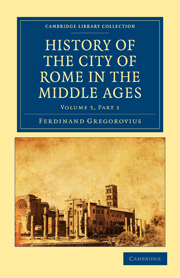CHAPTER I
Published online by Cambridge University Press: 04 April 2011
Summary
After the chivalric and religious enthusiasm of the twelfth century, the succeeding century shows mankind arrived at a fuller maturity, engaged in fierce struggles for the acquisition of a civic constitution, and already enjoying a life ennobled by work, by knowledge, and by art. The thirteenth century is the culmination of the Middle Ages, on which the Church stands conspicuous in the fulness of her power, while with the Hohenstaufens the ancient German empire passes out of history in order to leave the field clear for independent national states. The empire, with a last superhuman effort, continued under Frederick II. the struggle for its legitimate existence against two tendencies of the age, to the united force of which it was obliged to succumb. It fought against the universal dominion of the Papacy, and, as in the second half of the twelfth century, the Papacy formed an alliance with the Italian democracies, which, by means of the principle of Latin municipalism, overthrew the foreign institution of German feudalism. The thirteenth century is the age of a great struggle for freedom against an obsolescent but legitimate constitution; of the revolution of the middle class against the feudal aristocracy; of democracy against the imperial monarchy; of the Church against the empire; of heresy against the Papacy. It is a period, above all, invested with a special lustre by the republican freedom of Italy.
- Type
- Chapter
- Information
- History of the City of Rome in the Middle Ages , pp. 1 - 49Publisher: Cambridge University PressPrint publication year: 2010First published in: 1897

